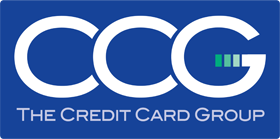What is happening to the look of credit and debit cards, and what do those design changes mean to retailers?
After many years of forcing banks to adhere to standard formats for designing credit and debit cards, the major card brands (Visa and MasterCard) have loosened up on their strict requirements. This has allowed card-issuing banks to get more creative in the way they design the looks of their cards.
If you accept cards as payment, though, the changes can be more than just cosmetic and could cause problems in some cases.
First, some cards are now being printed vertically (portrait) instead of the more traditional horizontal (landscape) orientation. While this by itself is cause for little more than a minor discussion about design, another change could have a significant impact.
That’s because on some cards, the cardholder name, number and other information on the front of the card are being laser printed instead of embossed. If you, as a merchant, use an old style imprinter (aka, “knuckle buster” or “zip zap” machine), you will not be able to accept these cards without handwriting the card information. And that’s because it’s the embossing that is “captured” by the imprinter; with laser printing the surface is smooth.
Similarly, if the magnetic stripe on one of these new-look cards is damaged and you have to hand key the card information into your electronic terminal, you will not be able to complete the manual imprinter slip properly to prove the card was present.
While you will still be able to get an authorization code in either of these two scenarios, the failure to collect an “imprint” of the card information opens you up to a possible chargeback – which you will lose every time!
Since these non-embossed cards do not allow for manual imprinting, businesses without terminals, or with cards that can’t be swiped, should ask the consumer for another form of payment. In these cases, the cardholder will probably not understand why the card is being refused. The cardholder should be directed to the issuing bank to get a replacement card. The bank’s phone number is located on the back of the card.
Another change that has been happening slowly over the last few years is the migration of the hologram to the back of the card. The hologram is an important fraud protection device.
In the past, the card brand hologram was located along the line of the account number, so that the number was embossed right through the hologram as a way to deter counterfeiting of the cards. With the changes noted above, this is no longer needed, although the card hologram still serves as a way to make counterfeiting harder.
As always, businesses that process through Michigan Retailers should call our customer service department with any questions brought on by these new cards.
John Mayleben CPP is Retailers Processing Network senior vice president, technology and product development, and a national expert on electronic payment processing. He was the first person in Michigan and among the first in the nation to receive the Certified Payments Professional designation from the Electronic Transactions Association.
